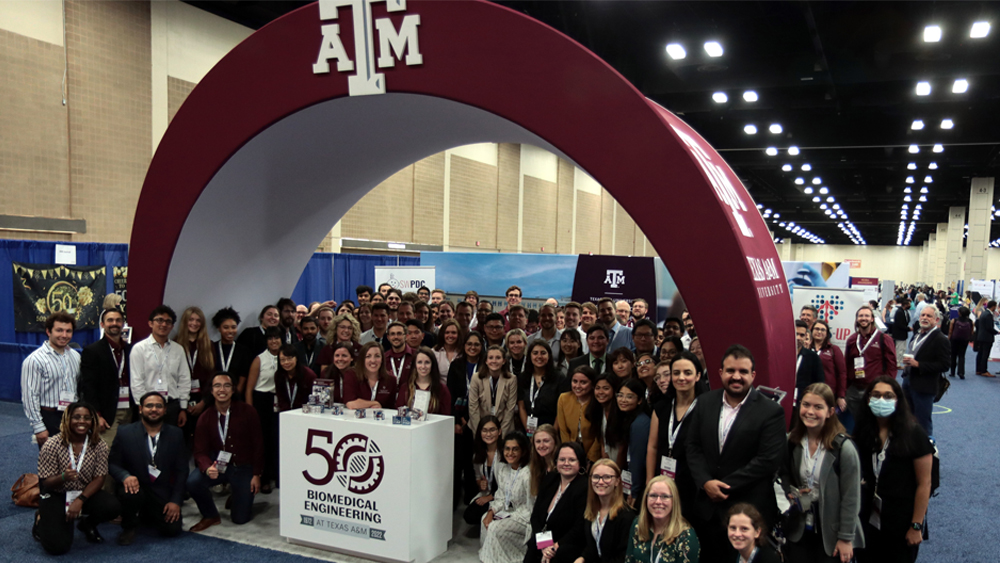
Last October, more than 110 faculty, staff and students from the Department of Biomedical Engineering at Texas A&M University traveled to San Antonio, Texas, for the 2022 Biomedical Engineering Society (BMES) Annual Meeting. The meeting was an opportunity for biomedical engineers across the globe to network, present research findings and share recent advancements in technology.
While the BMES meeting is an annual occurrence, the 2022 conference coincided with the department’s 50th anniversary. The department celebrated with record-breaking attendance, an oversized space in the exhibit hall, an upscale reception and by serving as a platinum sponsor — the highest level of support a program can choose.
“BMES is an important forum for us to demonstrate research successes and promote our recent achievements,” said Dr. Mike McShane, department head and James J. Cain Professor II. “Sponsoring the conference provided valuable resources to the BMES organization, while also improving our visibility at a critical time. The platinum sponsorship gave us a very effective platform to share our accomplishments and milestones with the entire community.”
In addition to the 50th anniversary, the department found other reasons to celebrate. Dr. Melissa Grunlan, Charles H. and Bettye Barclay Professor, and Dr. Tanmay Lele, Unocal Professor, were formally recognized as BMES Fellows during the meeting.
The department also contributed extensively to the meeting with 88 oral and poster presentations. Grunlan alone brought four graduate students and two undergraduate students from her lab to present at the meeting.
“Attending conferences is important to one's educational and career development,” Grunlan said. “It provides an opportunity to refine technical presentation skills, keep apprised of the field and network with others.”
Lucas Lott, a senior undergraduate student in Grunlan’s lab, developed a poster presentation on research he has been working on for over a year. While he was more than familiar with his findings, Lott said a great deal went into preparing his poster, including peers cross-questioning his work to ensure his confidence when responding to inquiries at the meeting.
“Independently assembling a complicated poster display challenged my graphic design skills and taught me many lessons about structuring intelligible data,” Lott said. “It also improved my verbal clarity for presentations.”
Despite the work, Lott said participating in the meeting was a privilege.
“I was in the presence of some of the brightest and most prestigious minds in biomedical engineering,” Lott said. “I wish every undergraduate student, especially those interested in graduate school, had the opportunity to observe the emerging research as I did because the experience was indescribably inspiring.”